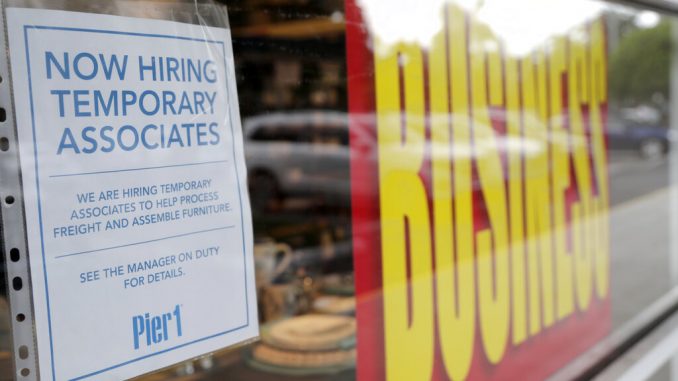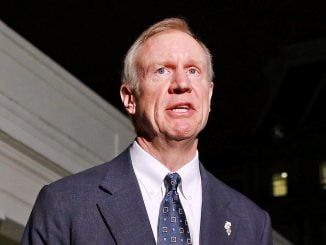
WASHINGTON, D.C. — The United States added 1.8 million jobs in July, evidence that the resurgent coronavirus could be stalling hiring and slowing an economic rebound.
With confirmed viral cases still elevated in much of the nation and businesses under continued pressure, some employers appear reluctant or unable to hire. The economy has now recovered only about 42% of the 22 million jobs it lost to the pandemic-induced recession, according to the Labor Department’s jobs report released Friday.
The unemployment rate did decline in July from 11.1% to 10.2%.
The acceleration of the viral outbreak that began in late June more than doubled the daily U.S. confirmed case count by mid-July, though the rate of new reported cases has since declined. The outbreaks have led many states and cities to close bars and other businesses for a second time and have dampened confidence, causing many consumers to continue limiting their shopping, traveling, eating out and gathering in crowds.
July’s job gain was lower than June’s 4.8 million and May’s 2.7 million jobs, both of which were revised slightly.
The economy has since started to grow again, and many economists have forecast a solid rebound in the July-September quarter, though not nearly enough to offset the second quarter’s dizzying fall.
Economists forecast that employers added 1.6 million jobs, according to a survey by data provider FactSet. That would normally be a scintillating gain. Yet it would still fall far short of June’s 4.8 million increase and May’s 2.7 million gain. And it would mean that the economy has regained only about 40% of the jobs that were lost when the pandemic intensified in March and triggered a deep recession and tens of millions of layoffs.
The unemployment rate is expected to have declined from 11.1% to 10.5%, which would still exceed the highest rate during the 2008-2009 Great Recession.
The economy cratered in the April-June quarter, shrinking at a nearly 33% annual rate, as the viral outbreak shut down businesses and consumers pulled back sharply on dining out, traveling and shopping.
The Institute for Supply Management reported in two surveys this week that both manufacturing and service sector companies expanded output and sales faster in July than in June.
CNBC said the report “topped expectations” during the month.
“What the data continues to tell me is that we’re making progress from the pain that was most acute back in March and April. So we continue to have this recovery, but it’s uneven,” said Michael Arone, chief investment strategist for the U.S. SPDR business at State Street Global Advisors. “We still have a lot of wood to chop here, but we’re moving in the right direction.”
Two bright spots for the economy have been housing and auto sales. Ultra-low interest rates, produced in part by the Federal Reserve’s ultra-low interest rates, fueled sharp increases in sales of new and existing homes in June. Lower interest rates have also boosted auto sales, though both home and auto sales remain below pre-pandemic levels.



